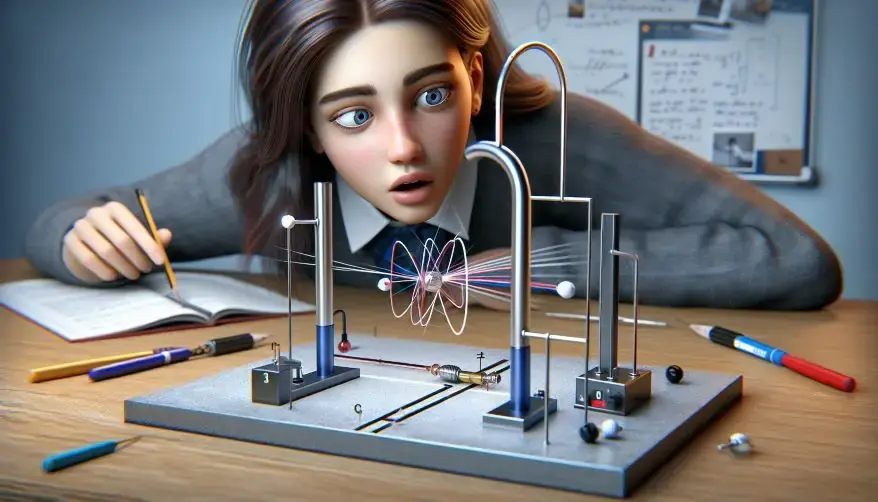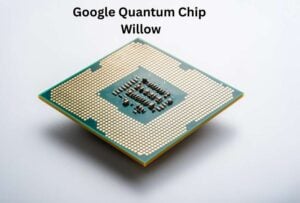10 Foundational Principles of Quantum Computing – Part II
Quantum systems exist in a state of superposition until observed. Imagine a particle is moving through a setup with two magnets. These magnets can change the direction of the particle based on its “spin”. If the spin points to the left, the particle goes to the left detector. If the spin points to the right, the particle goes to the right detector. But if the spin is pointing straight up, something strange happens! The particle is in a special quantum state where it can go both left and right at the same time, like it is in two places at once. We refer to this as quantum superposition.
Quantum Measurement
The particle remains uncertain about its direction until it encounters the detector. Whether it went left or right, the detector will register the particle on one side. In this case, the particle goes to the left detector, but it could have gone right. Both possibilities had the same chance! This is a weird and fascinating part of how quantum mechanics works.
Schrödinger’s Cat [1]
Imagine a strange scenario: there’s a cat in a sealed box. The twist? Until you open the box, the cat is both alive and dead at the same time! Sounds unbelievable, right? This famous thought experiment by physicist Erwin Schrödinger helps us understand a mind-boggling concept in quantum mechanics called quantum superposition.
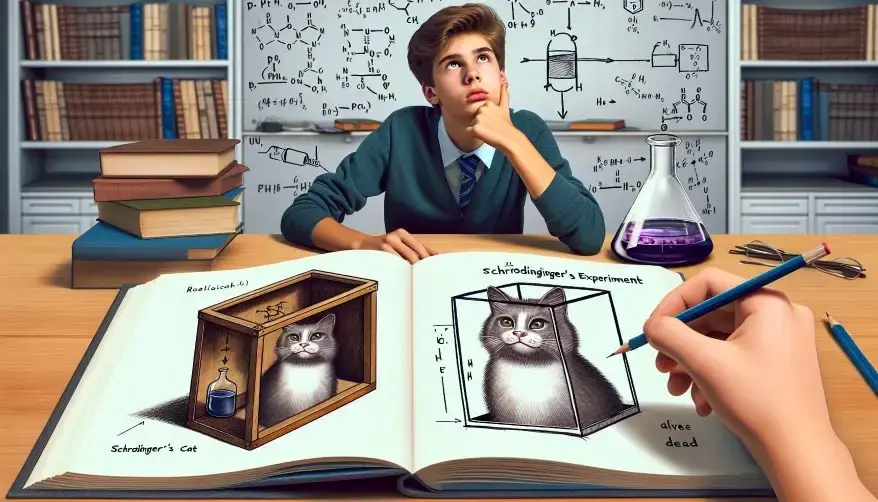
The Setup
Imagine inside the sealed box, we have:
· A cat (our unlucky participant).
· A radioactive atom with a 50% chance of decaying.
· A Geiger counter to detect if the atom decays.
· A vial of poison, connected to a hammer, ready to break if triggered.
How It Works
1. If the radioactive atom does not decay, the cat stays alive.
2. If the atom does decay, the Geiger counter detects it, triggering the hammer to break the vial and release the poison. Sadly, the cat dies.
Superposition
The radioactive atom exists in a superposition of two states: decayed and not decayed—at the same time! Since the cat’s fate depends on the atom, the cat is also in a superposition of two states: alive and dead, until someone opens the box.
The Big Reveal
When we finally open the box, we “observe” the system, and the superposition collapses. At that moment, the cat becomes either alive or dead—not both.
This thought experiment shows how, at the quantum level, things can exist in multiple states until we observe them. Mind-blowing, isn’t it? This truly makes us rethink how we see the world!
Quantum Interference
Quantum interference is a fascinating and strange phenomenon that happens when quantum particles, like electrons or photons, behave in ways that regular objects do not. It occurs when a quantum particle can take multiple paths at the same time and the different paths interact with each other.
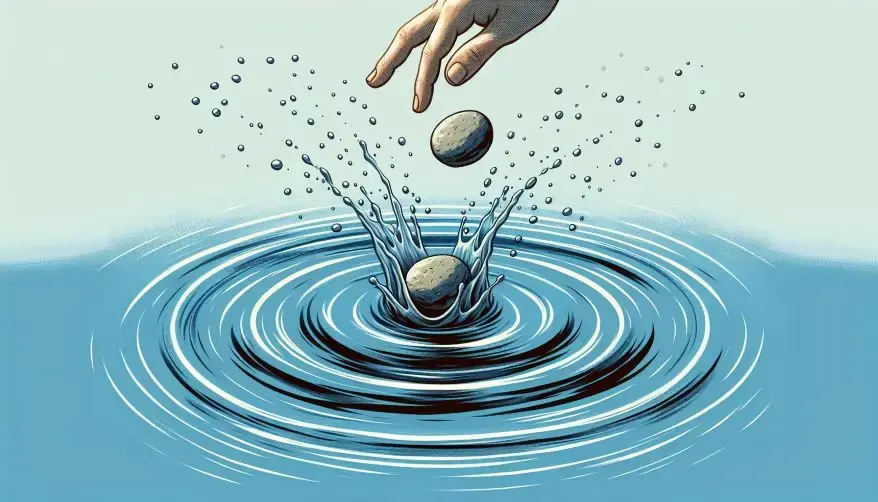
Imagine you are throwing two pebbles into a pond. Each pebble creates ripples in the water. Ripples spread out but do not affect each other when pebbles are thrown simultaneously.

Now, imagine you are throwing two waves (like light or electrons) instead of pebbles, and these waves can interact with each other. Depending on how the waves align, they can either add together or cancel each other out when they meet. We refer to this as interference. If the waves line up in the right way, they “boost” each other and make a bigger wave. If they line up in the opposite way, they cancel each other out. Figure 4 illustrates this.
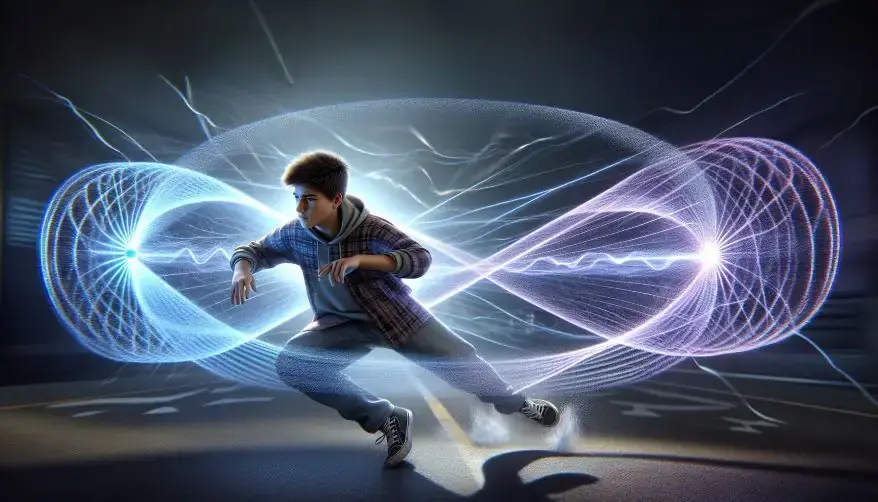
Waves of matter can interfere constructively or destructively, leading to the formation of interference patterns. This can be visualized through Double slit experiment [2].
The double-slit experiment is a classic experiment that shows how particles, like light or electrons, can act like waves and create patterns through interference.
The Setup
Imagine you have a wall with two narrow slits in it. Behind this wall, there is a detector(screen) that can catch particles like light (photons) or small pieces of matter (electrons).
Single Slit: If you shine light or shoot particles at just one slit, they go through and make a simple pattern on the detector, like a single line. This is what you would expect from particles traveling through a hole.
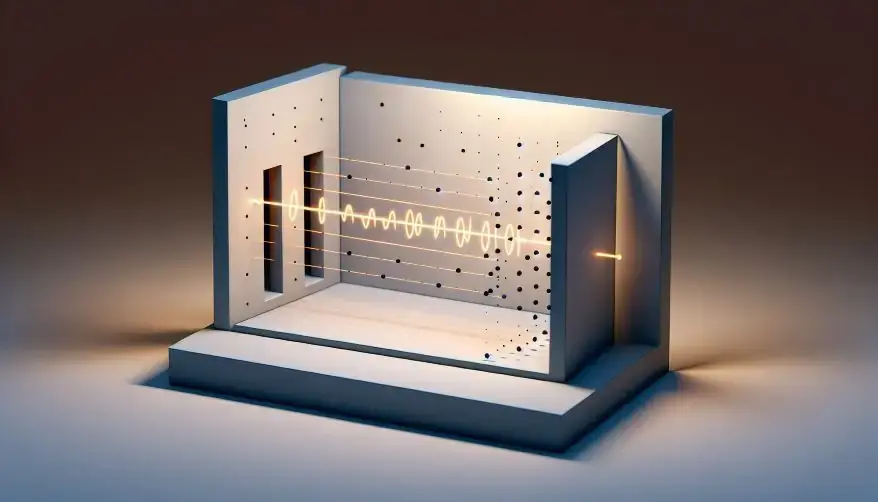
Two Slits: Now, when you shoot particles through both slits, something strange happens. Instead of just two bands forming on the detector, you see a series of light and dark bands, called an interference pattern.
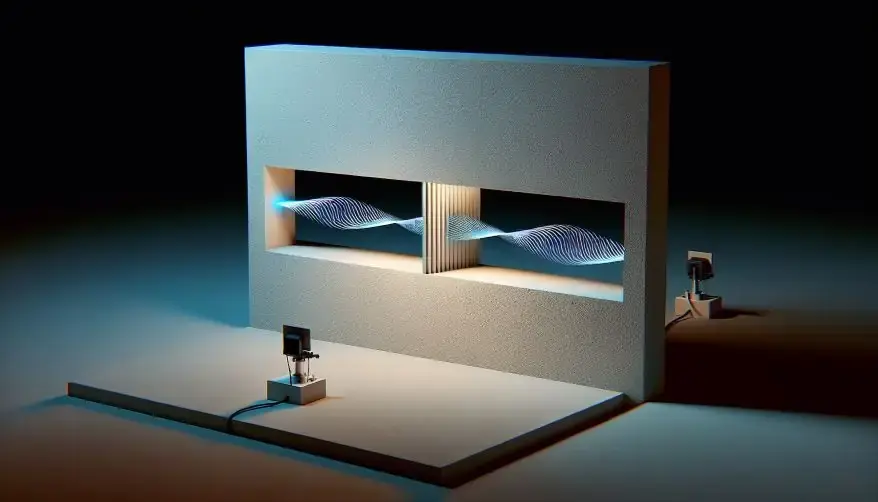
The Weird Part: Here is the really strange part. If you shoot the particles one at a time, you still get the interference pattern! This means that each individual particle somehow acts like a wave, passing through both slits at the same time and interfering with itself. It doesn’t choose which slit to pass through until it encounters detection!
The Final Mystery: The interference pattern only appears when no one is watching which slit the particle goes through. If you try to measure which slit the particle is passing through, the interference pattern disappears, and you just see two bands, like you would expect from particles. Figure 6 illustrates this.
Quantum Entanglement [3,6]
Quantum Entanglement is one of the most fascinating parts of quantum physics! Entanglement occurs when two or more particles become connected: the state of one particle instantly affects the state of the other, regardless of their distance. This is a crucial resource for quantum computing and communication.
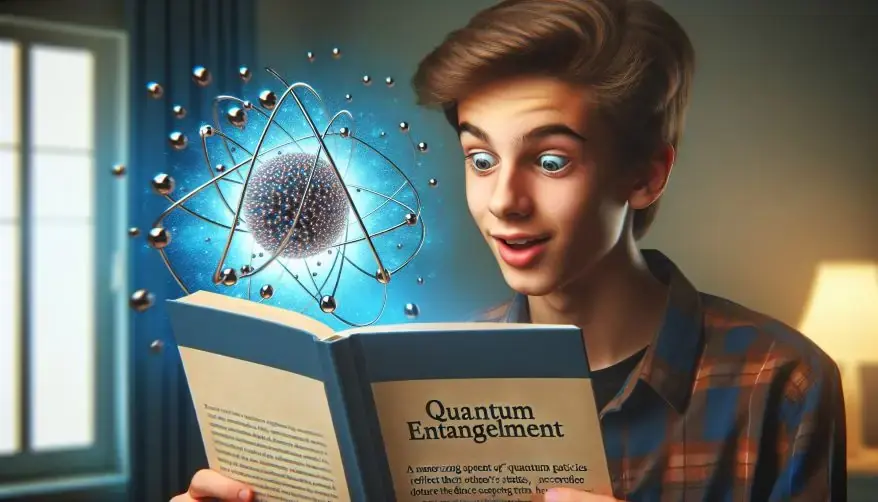
A Magical Connection Across the Universe
Imagine you and your best friend each have a magical pair of gloves. One is always a right-hand glove, and the other is always a left-hand glove. Let’s say you use one glove and your friend travels abroad.
The magical part: when you see your glove is for the right hand, you instantly know your friend’s glove is for the left hand, no matter how far apart you are!
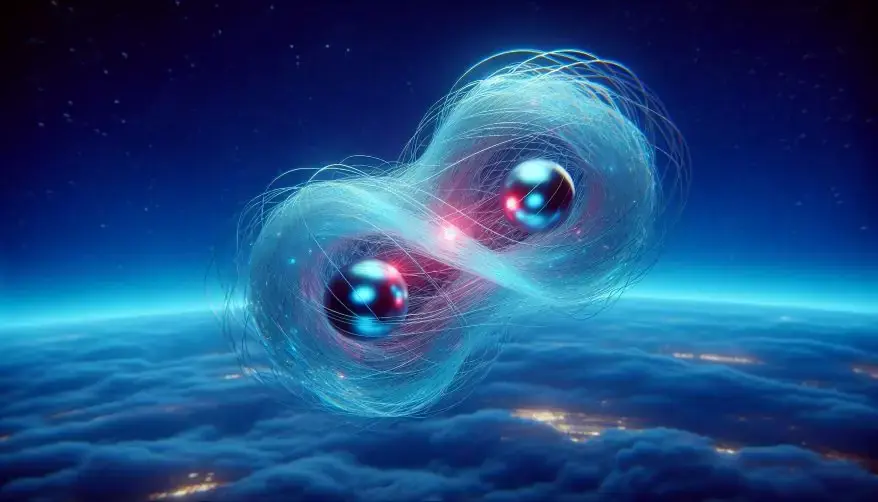
Two particles, such as photons or electrons, mysteriously link their properties when they become entangled. If you measure one particle, the other knows instantly and takes on the corresponding property, even if they are light-years apart!
One of the most well-known examples of an entangled state is the Bell state. In this state, neither qubit has a definite state on its own. Instead, they are correlated, with one qubit in state 0 indicating the other in state 1⟩, and vice versa. Bell states are fundamental in quantum computing.
Coherence [5]
Imagine an orchestra playing a beautiful tune. Each musician plays their instrument perfectly in sync, creating a harmonious melody.
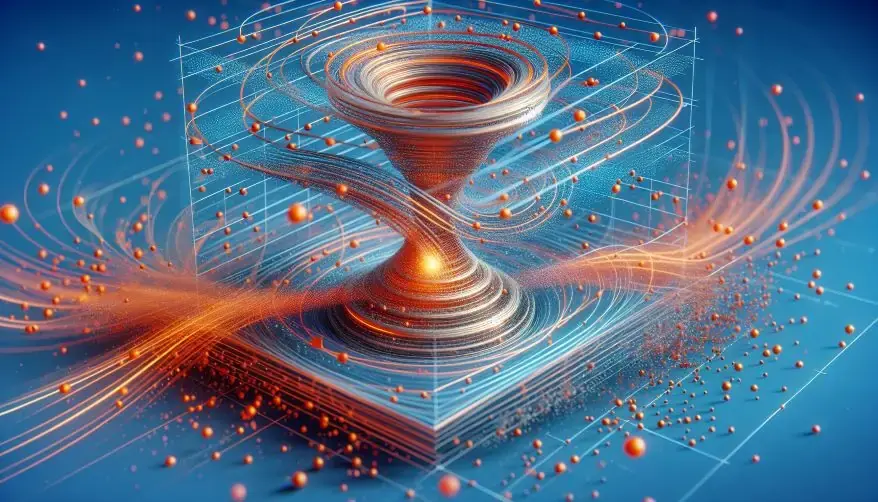
In quantum mechanics, coherence is the tiny particles or waves in a quantum system stay in step with each other, maintaining a steady relationship. This synchronization allows amazing things to happen, like interference, superposition and entanglement.
But just like noise can disturb an orchestra, coherence in a quantum system can be disrupted by:
Heat: Random movements of particles.
Electromagnetic interference: Signals from nearby devices.
Imperfections in quantum gates: Tiny errors in the systems used to control quantum particles.
Decoherence [6]
Imagine an orchestra where the musicians start playing out of sync, with different timings and rhythms. Instead of a beautiful melody, you hear chaotic noise.
In quantum mechanics, decoherence is like this loss of harmony. It happens when a quantum system interacts with its surroundings and loses its special quantum properties. This makes it behave more like everyday objects.
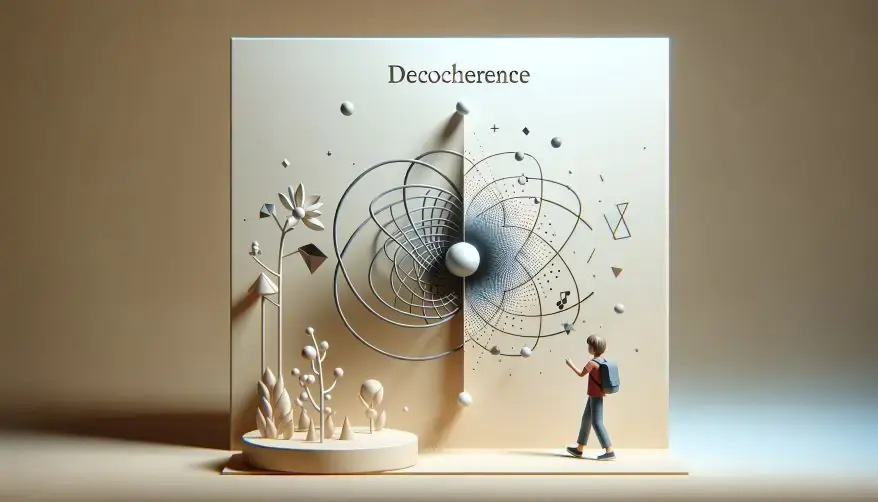
For example: When a quantum particle meets air molecules or light, its wave-like behaviour disappears, and it settles into a fixed state. This is a big challenge in creating stable quantum computers.
To reduce decoherence, the quantum particles are kept in sub-zero temperatures or in vacuum, away from any interference.
Conclusion
Quantum computing transcends mere science, akin to uncovering the mysteries of a mystical realm. By combining the strange and exciting principles of quantum mechanics, such as superposition, entanglement, and coherence, quantum computers can solve problems that seem impossible for classical computers. Think of it as entering a world where particles can be in two places at once, where information can travel instantly across vast distances, and where solving problems becomes faster and smarter. This journey into quantum computing is just beginning, and one day, it could change the way we understand science, technology, and the universe itself!
References
[1] A Sudbery,” The life and entangled adventures of Schr¨odinger’s cat”, August 2023, https://arxiv.org/pdf/2309.06387
[2] Donald D Fitts, Principles of Quantum Mechanics, Cambridge University Press,2012
[3] Esfeld, M. (2004). Quantum entanglement and a metaphysics of relations. Studies in History and Philosophy of Science Part B: Studies in History and Philosophy of Modern Physics, 35(4), 601-617.
[4] Xi, Z., Li, Y., & Fan, H. (2015),”Quantum coherence and correlations in quantum system”, Scientific reports, 5(1), 10922.
[5] Schlosshauer, M. (2019). Quantum decoherence. Physics Reports, 831, 1-57.
[6] Zeilinger, A. (1999). A foundational principle for quantum mechanics. Foundations of Physics, 29(4), 631-643.
Additionally, to stay updated with the latest developments in STEM research, visit ENTECH Online. Basically, this is our digital magazine for science, technology, engineering, and mathematics. Furthermore, at ENTECH Online, you’ll find a wealth of information.
